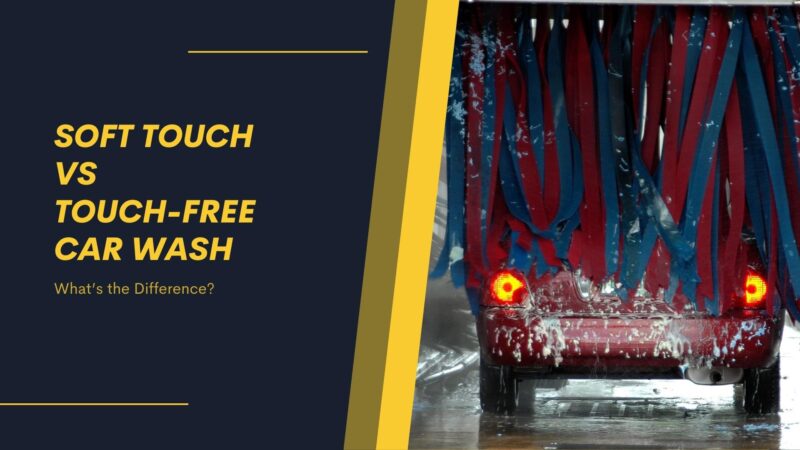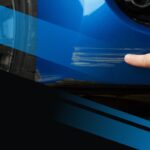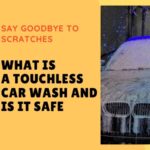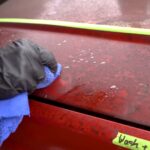Car washes have become an essential part of vehicle maintenance. With a plethora of options available, it can be challenging to decide which type of car wash is best for your vehicle. In this comprehensive guide, we will explore the differences between soft touch and touch-free car washes. We will examine their pros and cons, the technology behind each method, and offer expert advice to help you make an informed decision. So, buckle up and get ready to dive deep into the world of car washes!
Understanding Soft Touch Car Washes
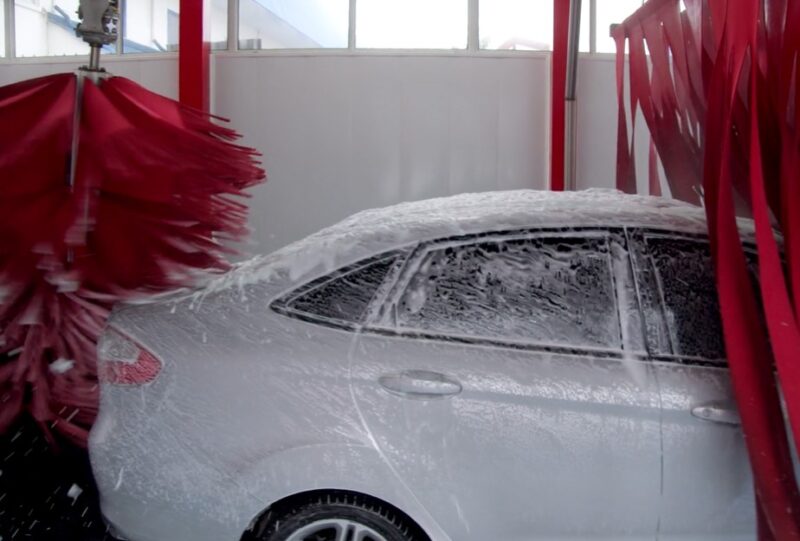
What is a Soft Touch Car Wash?
A soft-touch car wash uses cloth, foam, or a combination of both to gently clean the surface of your vehicle. These materials are designed to be non-abrasive, ensuring that your car’s paint and finish remain protected while effectively removing dirt, grime, and other contaminants.
How Does It Work?
A soft-touch car wash typically has a conveyor system that guides your vehicle through a series of cleaning stations. These stations use rotating brushes, high-pressure water jets, and carefully formulated detergents to clean and rinse your car. As your vehicle progresses through the car wash, it is subjected to various stages of cleaning, including:
- Pre-soak: This initial stage uses a low-pressure spray of water and detergent to loosen dirt and grime.
- Wash: Soft cloth or foam brushes gently scrub the car’s surface, removing dirt and debris.
- Rinse: High-pressure water jets rinse away the soap and dirt.
- Dry: Powerful air blowers or soft cloth dryers remove any remaining water droplets.
Pros and Cons of Soft Touch Car Washes
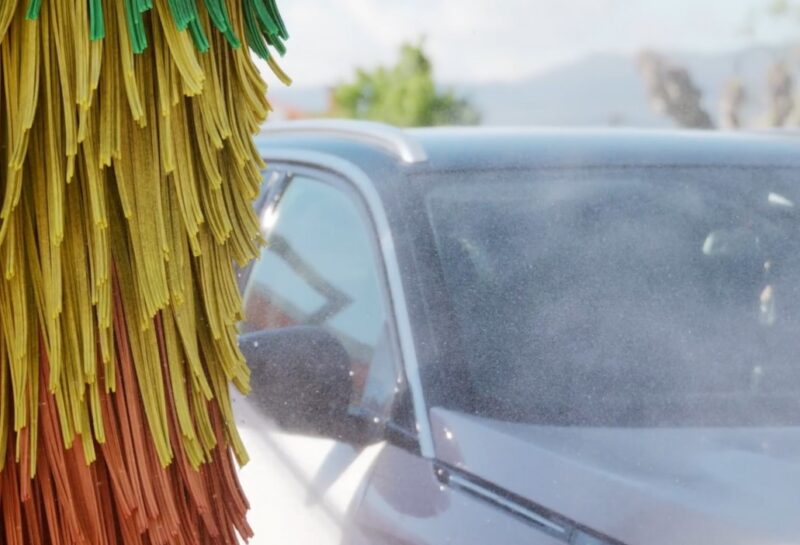
Pros:
- Effective cleaning: Soft-touch car washes are known for their ability to remove tough dirt, grime, and contaminants from your vehicle’s surface.
- Gentle on paint: The soft materials used in this method help protect your car’s finish and paint job.
- Quick and efficient: Soft-touch car washes can clean your car in a matter of minutes.
Cons:
- Potential for damage: Although the materials used are designed to be gentle, there is still a risk of scratching or swirling, especially if the car wash is not well-maintained.
- Not ideal for all vehicles: Soft touch car washes may not be suitable for vehicles with aftermarket modifications, such as low-hanging spoilers or other customizations.
Understanding Touch-Free Car Washes
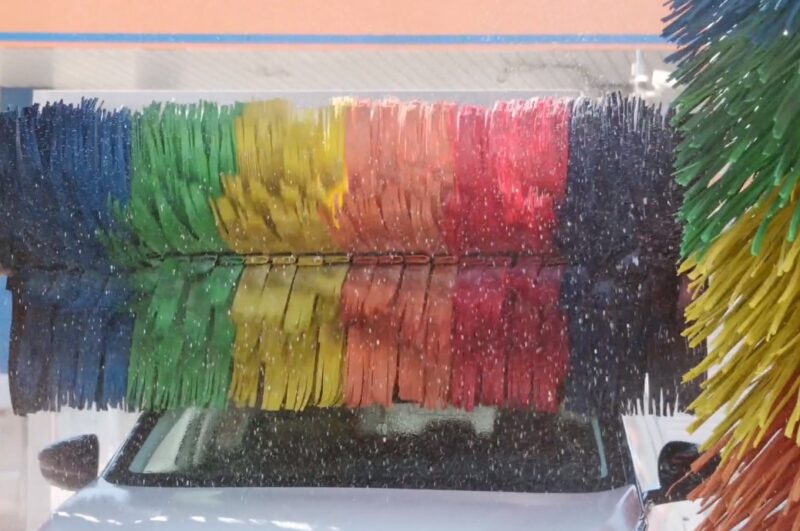
What is a Touch-Free Car Wash?
A touch-free car wash, also known as a laser or touchless car wash, uses high-pressure water and specialized cleaning chemicals to remove dirt and grime from your vehicle’s surface without any physical contact.
Is It Better Than the Regular Car Wash?
When it comes to the debate between touchless and regular car washes, the ultimate choice is often a matter of personal preference. Different car owners prioritize different aspects of their vehicle’s care and maintenance, and as a result, the answer to the question, “Are touchless car washes better?” will vary from one individual to another.
While some may prioritize the thorough cleaning provided by a regular, soft-touch car wash, others may lean towards the safer, no-contact cleaning offered by touchless car washes.
Given that regular car washes, particularly those that are not well-maintained, can be prone to causing scratches on a vehicle’s exterior, opting for a touchless car wash may be a better choice for those who want to minimize the probability of exterior damage.
By using high-pressure water jets and carefully formulated chemicals, touchless car washes can still provide a satisfactory cleaning experience while mitigating the risks associated with physical contact. Ultimately, each car owner must weigh the benefits and drawbacks of each method to determine the best fit for their unique needs and preferences.
How Does It Work?
In a touch-free car wash, your vehicle is guided through a series of cleaning stations using a conveyor system, similar to a soft-touch car wash. However, instead of brushes or cloth, the cleaning process relies on water pressure and chemical reactions. The stages of a touch-free car wash include:
- Pre-soak: A chemical solution is sprayed onto your vehicle to loosen dirt and grime.
- High-pressure wash: Powerful jets of water are used to rinse away the pre-soak solution and dirt.
- Rinse: A spot-free rinse ensures a streak-free finish.
- Dry: Air blowers remove any remaining water droplets.
Pros and Cons of Touch-Free Car Washes
Pros:
- No physical contact: The touch-free method eliminates the risk of scratches or swirls caused by brushes or cloth.
- Suitable for all vehicles: Touch-free car washes are ideal for vehicles with aftermarket modifications, as there is no physical contact that could potentially damage custom parts.
- Low maintenance: With no brushes or cloth to maintain, touch-free car washes generally require less upkeep.
Cons:
- Less effective cleaning: Touch-free car washes may not be as effective in removing tough dirt and grime compared to soft-touch car washes.
- Chemical reliance: The cleaning process depends heavily on chemicals, which may not be as environmentally friendly as other methods.
- Higher water usage: Touch-free car washes often use more water than soft-touch car washes due to the reliance on high-pressure water jets.
Choosing the Right Car Wash for Your Vehicle
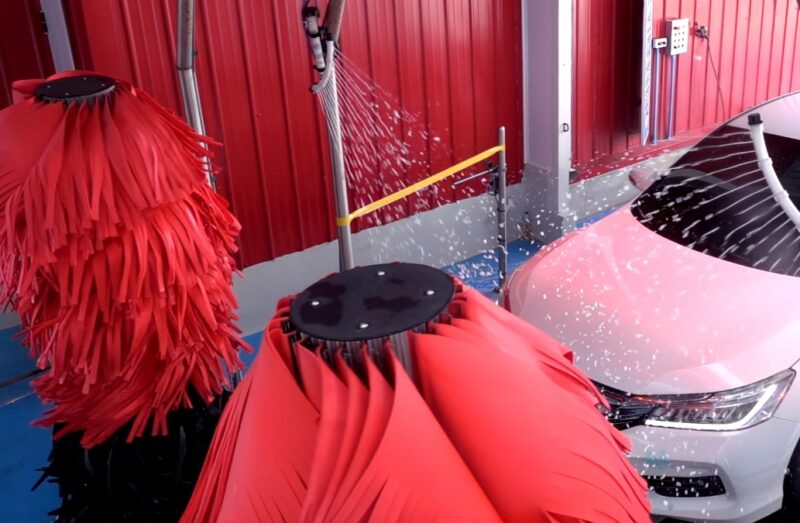
Factors to Consider
When deciding between a soft touch and touch-free car wash, it’s essential to consider several factors, including:
- Your vehicle’s condition: If your car’s paint is in pristine condition, a touch-free car wash may be a suitable option. However, if your car is heavily soiled, a soft-touch car wash may be more effective in removing dirt and grime.
- Aftermarket modifications: Vehicles with customizations, such as low-hanging spoilers or other modifications, may be better suited for touch-free car washes to avoid potential damage.
- Environmental impact: If you’re concerned about water usage and chemical reliance, a soft-touch car wash may be a more eco-friendly choice.
- Maintenance concerns: Regularly using a well-maintained soft-touch car wash can help reduce the risk of paint damage, while touch-free car washes generally require less upkeep.
Expert Recommendations
For most vehicle owners, alternating between soft touch and touch-free car washes can provide the best of both worlds. Utilizing a soft touch car wash when your car is heavily soiled ensures thorough cleaning while opting for a touch-free wash in between can help maintain your vehicle’s paint job without the risk of physical contact.
Additionally, it’s crucial to choose a reputable car wash that properly maintains its equipment, regardless of the type you prefer. A well-maintained car wash reduces the risk of paint damage and ensures a more effective and satisfying cleaning experience.
Final Words
In conclusion, the choice between a soft touch and a touch-free car wash ultimately depends on your vehicle’s specific needs and your personal preferences. By understanding the differences between the two methods and considering factors such as your car’s condition, modifications, and environmental impact, you can make an informed decision that best suits your vehicle’s maintenance needs.
Remember that alternating between the two types of car washes and selecting a reputable, well-maintained facility can help keep your car looking its best for years to come.

